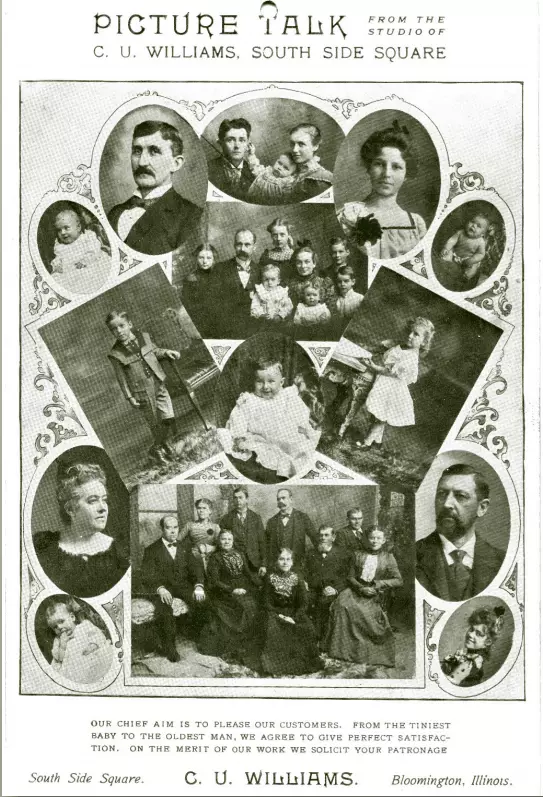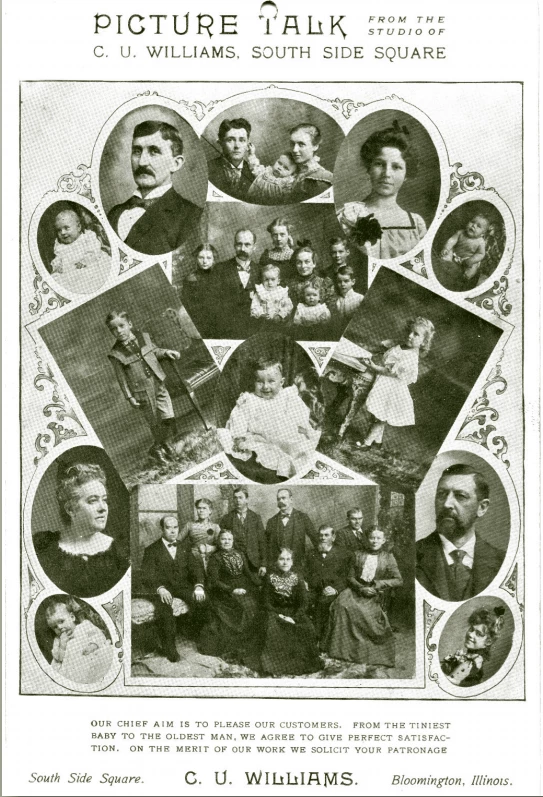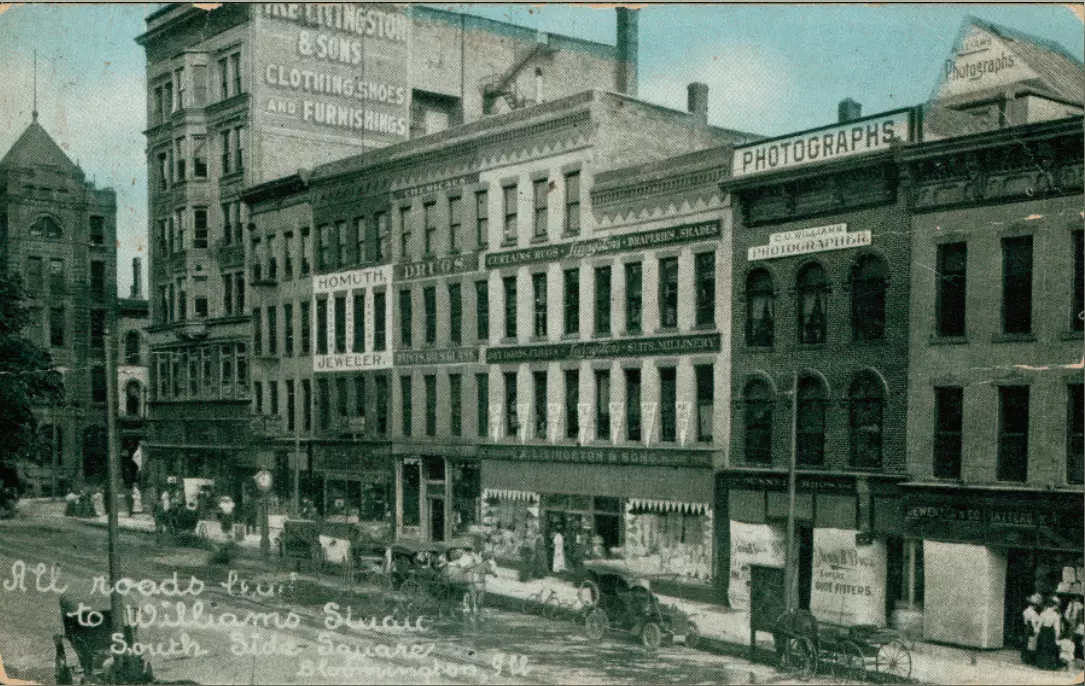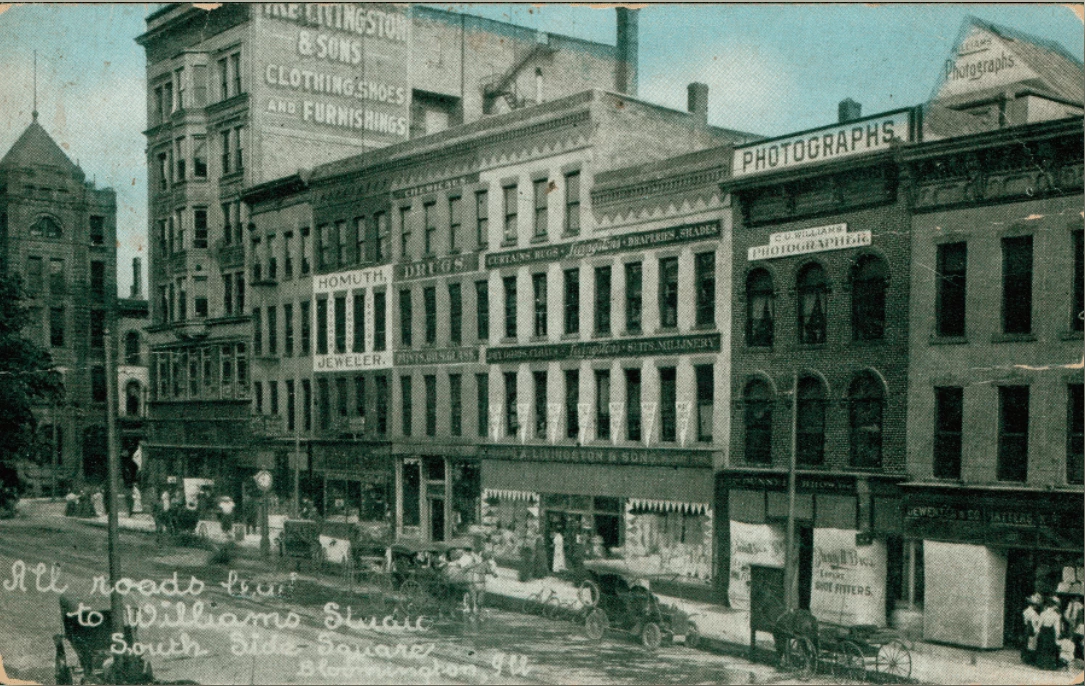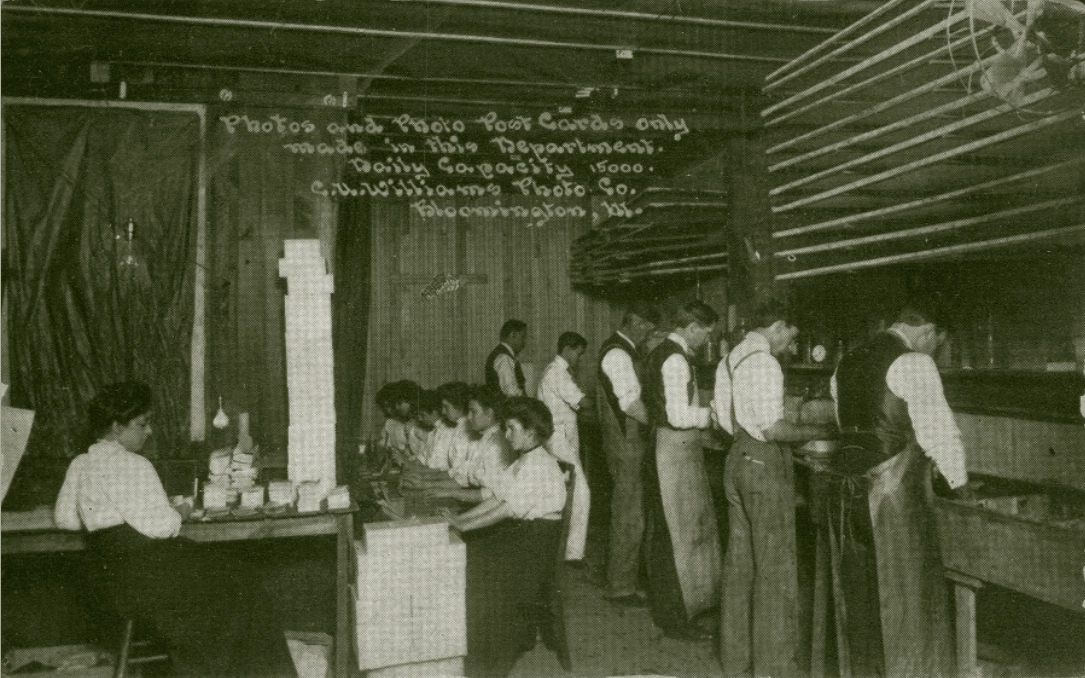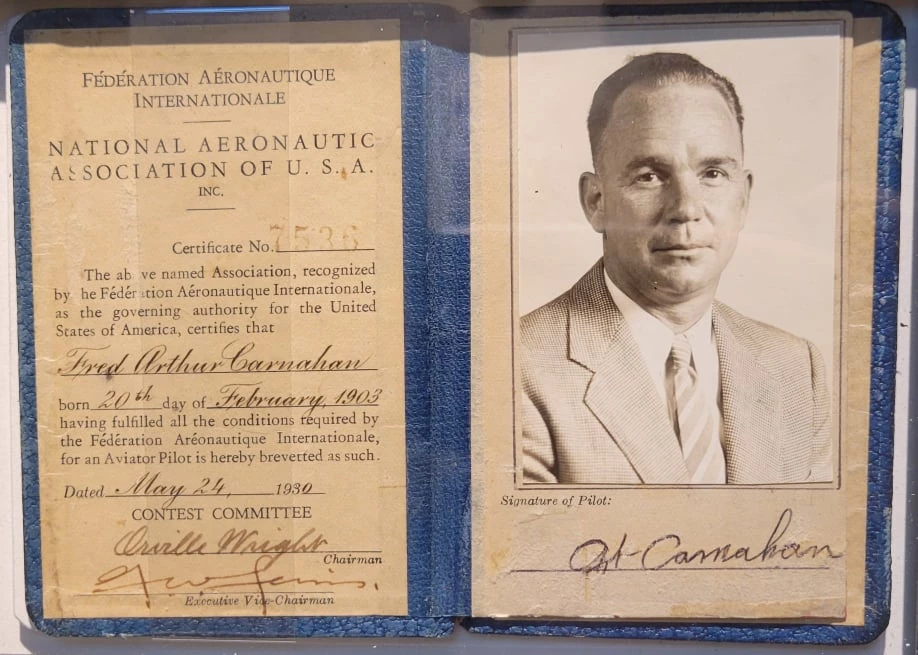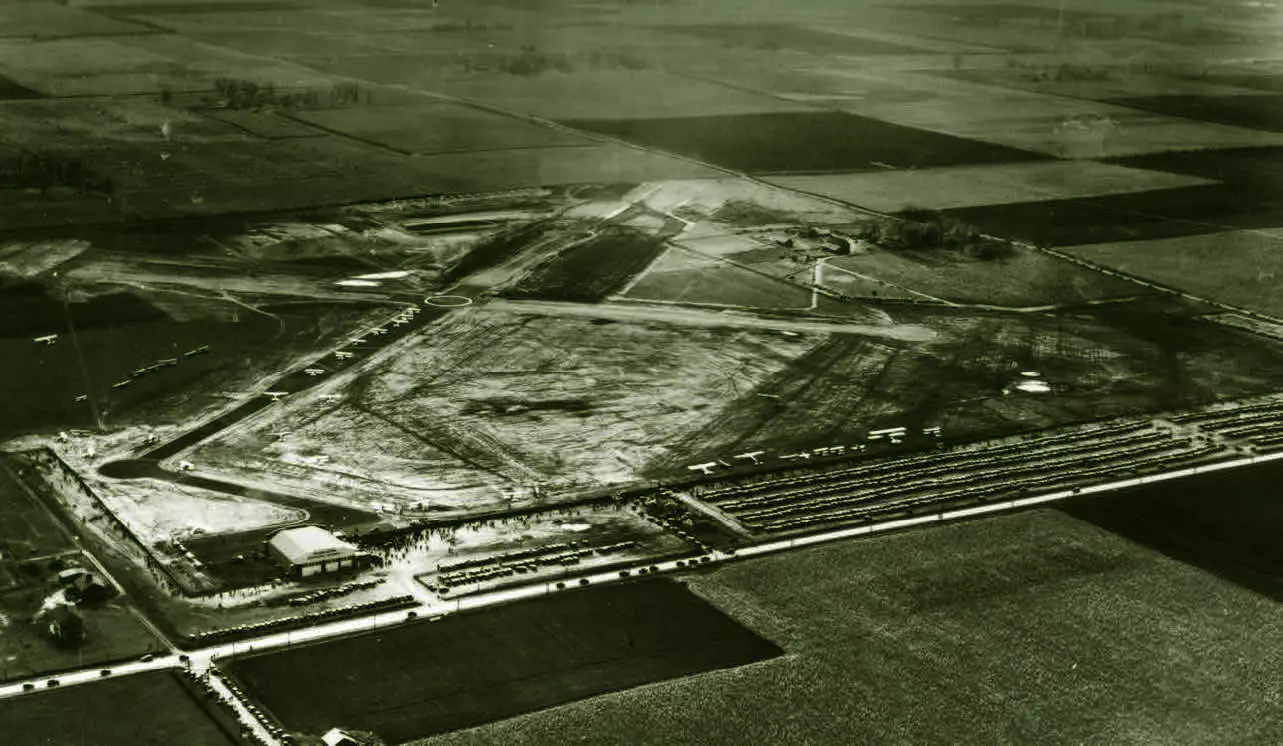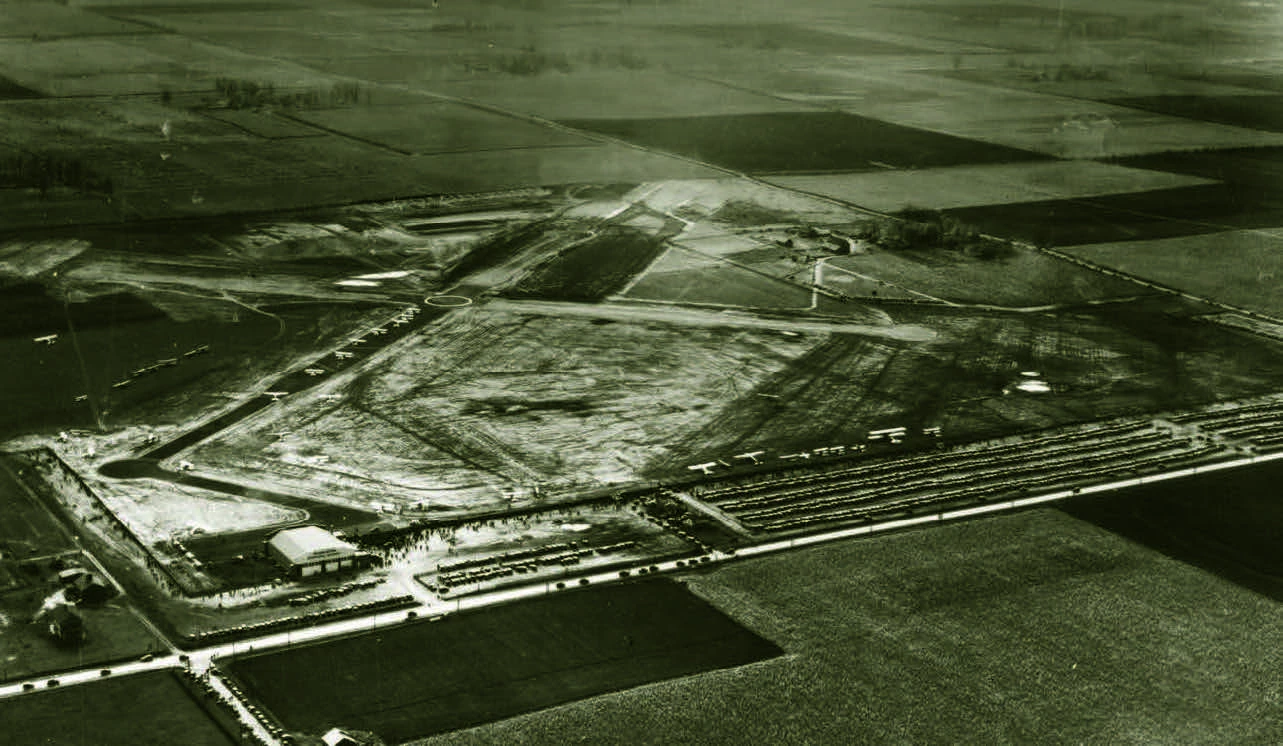Selling Cars and Taking Flight
As automobiles gained popularity, the number of car dealers grew. But dealers needed capital in ordered to invest in such a business. Often these were individuals who were already successful business owners. Air travel took off in McLean County as early as the mid-1930s, but was mostly limited to charter flights until well after World War II.Featuring:Charles Urban “C.U.” Williams, (1867 – 1953), photographer and car salesmanArt F. Carnahan, (1903 – 1974), mechanic and pilotCharles Urban “C.U.” Williams (1867-1953) started his business career at the age of 13 in his home town of Brooklyn, New York. He tried many types of work, including printing, architecture, and advertising. But it was the field of photography that spurred on this young entrepreneur and enabled him to start future businesses.
C.U. arrived in Bloomington in 1888 and by 1890 had started the United States View Company. With a staff of a dozen or more photographers, he traveled from town to town photographing and making prints of individuals and families on their front porches.
He also photographed school classes, turning over the prints to the teachers to sell on commission. By 1896 he had expanded this business to include souvenir postcards.
Inspired by a postcard mailed to Bloomington’s Sigmund Livingston from Heidelberg, Germany, C.U. and his photographers took pictures of important sites and buildings in the many towns they visited. Then they printed and hand colored postcards of the photos and sold them in bulk to businesses in those cities to resell as souvenirs.
The success of his photography business enabled C.U. to invest in another. Always the entrepreneur looking for the next best thing, he started an auto sales and repair business in 1909.
C.U. and his son Walter had a new building constructed to house their auto dealership and repair shop.
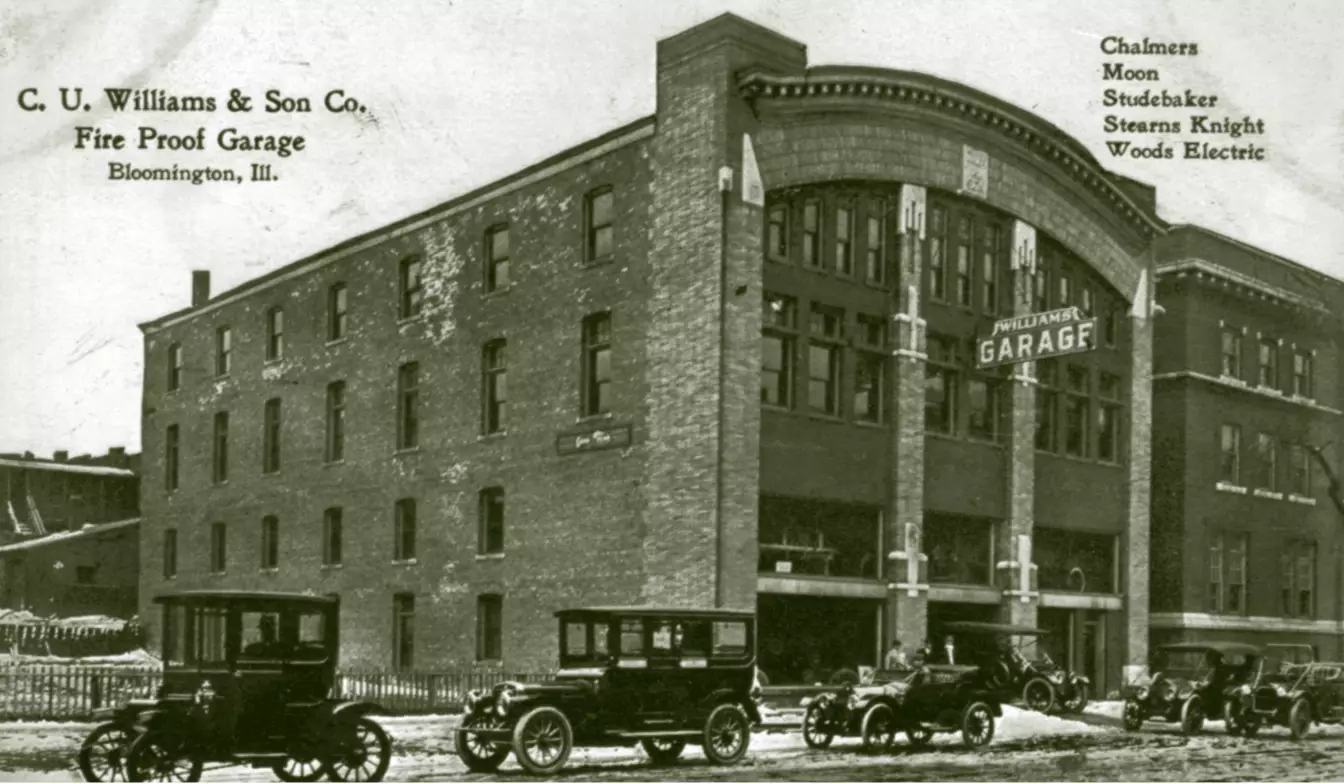
Located at 207-11 E. Washington Street, C.U.’s building featured second-story showroom windows – doubling the number of cars that could be seen from the street. The entire fourth floor was devoted to the repair shop with “good mechanics, plenty of light, no loafers. The best work at the least expense.” Williams & Son also offered auto painting, “livery service” (car rental by the day or hour), storage (most car owners did not yet have garages), and a place to charge battery-powered cars.
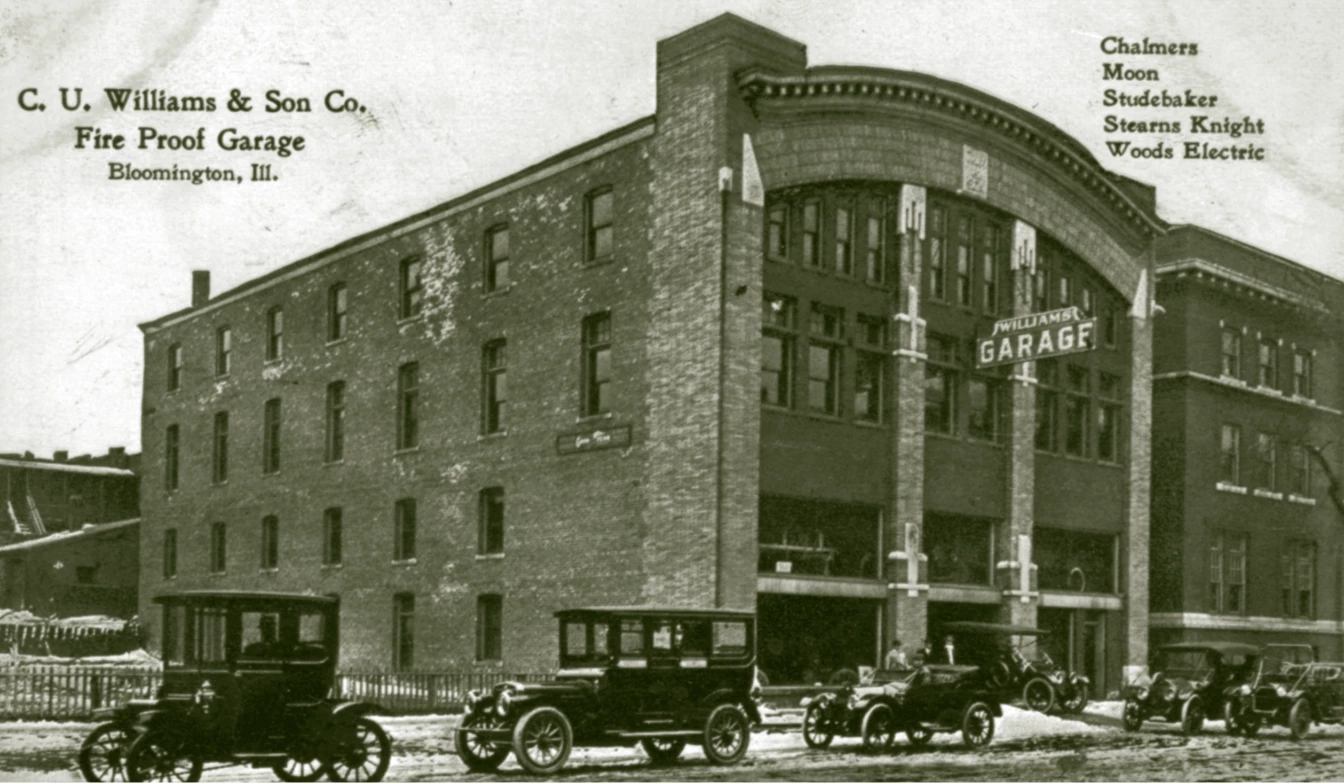
With business booming, Williams & Son opened a second location in 1916.
The first floor of this five-story annex housed the Castle Theater, with Williams & Son making use of the garage space above. In 1917 they added the manufacture of winter canopy tops for open air automobiles to their list of services.
Bloomington auto dealers, including C.U., liked to parade their newly arrived cars through town in order to draw attention.
C.U. and Walter shut down their auto dealership and garage shortly after they began production of their newest endeavor, the Oil-O-Matic burner.
Art F. Carnahan
Art F. Carnahan’s (1903-1974) first job was in his father’s auto repair garage. Art grew up in that garage, which opened in 1907. He quickly became an expert mechanic. But what he really wanted to do was fly.
Would you have the courage to attempt to master a new form of transportation that was still experimental and considered very dangerous?
Would it be worth the risk?
In 1927 Art started flying lessons. By 1929 he had his pilot's license. He received his transport license the following year. In 1931 Art opened a federally licensed flying school at Bloomington's first airport. In his first 10 years as a pilot, Art trained over 100 pilots, opened a new airport — the Bloomington Municipal Airport, and raced the Tilbury Flash and other planes, winning a number of races.
Art trained pilots for the Federal Civil Aeronautic program at the Bloomington Municipal airport in 1940-41, and from 1943-44 he operated the Navy's V5 and V12 Ground School at the same location, training over 1,000 Navy pilots.
Art also set up the first regular flights to Detroit, New York, and Mexico City via Chicago on Ozark Airlines in 1955.
After Art retired as manager of the airport in 1956, he bought a Beechcraft Bonanza and began offering charter flights for executives at State Farm Insurance, Funk Bros. Seed Co., Biddle Advertising, and several other companies. Poor health ended his flying career, but he continued to supervise State Farm's aviation team until his death in 1974.
 Making a Home
Making a Home
 A Community in Conflict
A Community in Conflict
 Working for a Living
Working for a Living
 Farming in the Great Corn Belt
Farming in the Great Corn Belt
 Abraham Lincoln in McLean County
Abraham Lincoln in McLean County


